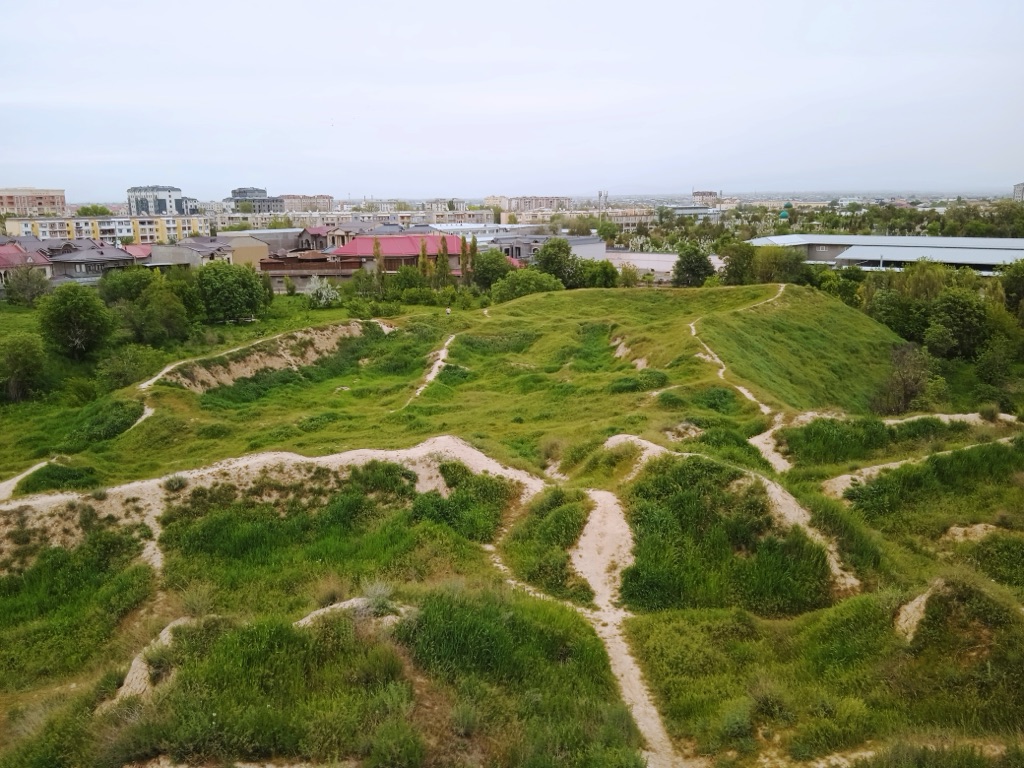Aktepa, located in Uzbekistan, is an ancient settlement that dates back to the 2nd century BC. It stands as a testament to the region’s rich history, particularly during the time of the Greco-Bactrian Kingdom and later under Kushan rule. The site offers valuable insights into the urban planning and defensive strategies of the time, with its citadel reflecting the architectural prowess of its builders. Aktepa’s historical significance is further highlighted by its strategic location along the Silk Road, which facilitated cultural and commercial exchanges between the East and West.
Get your dose of History via Email
Historical Background of Aktepa
The discovery of Aktepa dates back to the 20th century, although the exact year and discoverer remain unclear. The ancient settlement was built by the Greco-Bactrians in the 2nd century BC. It later became part of the Kushan Empire, serving as a strategic point along the Silk Road. Aktepa’s location made it a melting pot of cultures and a hub for trade and exchange.
Throughout its history, Aktepa has seen various inhabitants, including the Turks and the Arabs. These groups left their mark on the site, contributing to its rich cultural tapestry. The settlement was not just a commercial center but also a military stronghold. Its citadel, with formidable walls and towers, played a crucial role in the defense of the region.
Historically, Aktepa has not been the scene of any famous battles or events that have been recorded in detail. However, its continuous occupation and development over centuries underscore its importance in the historical narrative of Central Asia. The site’s endurance through various empires and cultures speaks to its significance and resilience.
The citadel of Aktepa, in particular, stands out as an architectural marvel of its time. Its construction techniques and design reflect the ingenuity and strategic thinking of its builders. The site’s layout, with its central fortress and surrounding residential areas, provides a glimpse into the urban planning of ancient settlements in the region.
Archaeological excavations at Aktepa have been limited, but the findings so far have provided valuable information about the life and times of its inhabitants. The artifacts unearthed, including pottery, coins, and tools, offer a window into the daily lives of those who lived there and the economic activities that sustained the settlement.
About Aktepa
Aktepa is an ancient citadel located in the Chirchik valley of Uzbekistan. It stands on a hill, offering a strategic vantage point over the surrounding area. The site’s elevated position made it an ideal location for a fortress, providing both defense and oversight of the region.
The construction of Aktepa utilized local materials, primarily mud bricks, which were abundant and easily accessible. The citadel’s walls, some of which still stand today, showcase the durability and strength of these materials when used effectively in ancient architecture.
Architectural highlights of Aktepa include its defensive walls, which were designed to withstand sieges and attacks. The walls were complemented by towers that provided lookout points and additional protection. The layout of the citadel, with its central fortress and surrounding residential and commercial areas, reflects a well-planned urban settlement.
Despite the passage of time, the ruins of Aktepa continue to impress visitors with their scale and complexity. The site’s architecture not only served practical defensive purposes but also demonstrated the aesthetic sensibilities of its builders. The design elements found at Aktepa are characteristic of the broader architectural trends in the region during the Greco-Bactrian and Kushan periods.
The methods of construction at Aktepa, while not unique to the site, are indicative of the advanced building techniques employed in ancient Central Asia. The use of mud bricks, combined with the strategic layout of the settlement, exemplifies the ingenuity of ancient architects and their ability to create enduring structures in a challenging environment.
Theories and Interpretations
Several theories exist about the purpose and significance of Aktepa. Some scholars suggest that it was primarily a military stronghold, given its robust defensive features. Others believe that it served as an administrative center, overseeing trade and governance in the region.
The mysteries of Aktepa include the exact nature of its role in the Silk Road trade network. While it is clear that the site was strategically located, the extent of its involvement in commercial activities is still a subject of research and debate.
Interpretations of Aktepa’s history have been matched to historical records where possible. However, gaps in the archaeological record leave room for speculation and further study. The site’s long history of occupation by different cultures adds layers of complexity to its interpretation.
Dating of Aktepa has been carried out using methods such as stratigraphy and typology of artifacts. These techniques have helped establish a timeline for the settlement’s construction and occupation. However, precise dating remains challenging due to the site’s extensive history and the limited scope of excavations.
Theories about Aktepa continue to evolve as new discoveries are made. Each artifact and structure unearthed contributes to a better understanding of the site’s past. As research continues, Aktepa’s story becomes more detailed, revealing the lives of those who shaped its history.
At a glance
Country: Uzbekistan
Civilization: Greco-Bactrian, later Kushan Empire
Age: 2nd century BC

